Types of steak – Prepare to embark on a culinary adventure as we delve into the world of steak, exploring the diverse cuts, cooking methods, and flavor profiles that define this iconic dish. From tender filets to juicy rib eyes, we’ll uncover the secrets of selecting, preparing, and savoring the perfect steak experience.
Types of Steak
Steak, a culinary delicacy enjoyed worldwide, is derived from various cuts of beef. Each cut possesses unique characteristics, including tenderness, flavor profile, and price point. Understanding these variations allows individuals to make informed choices based on their preferences and budget.
While there are numerous types of steak, such as tenderloin, ribeye, and strip steak, each with its unique flavor and texture, the ground beef used in salisbury steak recipe offers a versatile and budget-friendly alternative. Despite being made with ground beef, salisbury steak still captures the essence of a hearty and satisfying steak experience, making it a popular choice for home cooks.
Cut Characteristics
The tenderness of a steak primarily depends on the amount of connective tissue and muscle fibers present. Cuts with less connective tissue and finer muscle fibers tend to be more tender. Flavor, on the other hand, is influenced by factors such as the animal’s diet, age, and the specific muscle group from which the cut is derived.
| Cut | Tenderness | Flavor | Price |
|---|---|---|---|
| Tenderloin | Very tender | Mild, buttery | High |
| Ribeye | Moderately tender | Rich, beefy | Moderate |
| Strip loin (New York strip) | Moderately tender | Lean, slightly gamey | Moderate |
| T-bone | Combination of tenderloin and strip loin | Complex, both tender and flavorful | High |
| Porterhouse | Combination of tenderloin and strip loin, with larger tenderloin section | Similar to T-bone, with more tenderloin | High |
| Chuck | Less tender, but flavorful | Rich, beefy | Low |
| Flank | Less tender, with pronounced grain | Strong, beefy | Low |
Cooking Methods for Steak
Cooking steak to perfection requires careful consideration of the cooking method. Each technique offers unique advantages and disadvantages, and the choice depends on the desired texture, flavor, and tenderness.
Grilling
Grilling is a classic method that imparts a smoky flavor and charred exterior to the steak. The intense heat of the grill quickly sears the surface, creating a flavorful crust while leaving the interior tender and juicy.
- Pros: Imparts a smoky flavor, creates a charred crust, and is relatively quick.
- Cons: Can be challenging to control heat, may flare-ups, and requires constant monitoring.
- Tips: Use a high-quality grill with adjustable heat, preheat the grill to the desired temperature, and flip the steak frequently to prevent burning.
Pan-Searing
Pan-searing involves cooking the steak in a hot pan with a small amount of oil. This method creates a flavorful crust and a tender interior, but requires careful monitoring to prevent overcooking.
- Pros: Provides a flavorful crust, allows for precise temperature control, and is suitable for various cuts of steak.
- Cons: Requires constant monitoring, may not be suitable for thicker cuts, and can be messy.
- Tips: Use a heavy-bottomed pan, heat the pan over high heat, and sear the steak for a short time on each side.
Sous Vide
Sous vide is a modern technique that involves cooking the steak in a vacuum-sealed bag submerged in a temperature-controlled water bath. This method ensures even cooking throughout the steak, resulting in a tender and juicy texture.
- Pros: Provides precise temperature control, ensures even cooking, and minimizes moisture loss.
- Cons: Requires specialized equipment, can be time-consuming, and may lack the traditional grilled or seared flavor.
- Tips: Use a high-quality vacuum sealer, set the water bath to the desired temperature, and cook the steak for an extended period of time.
Steak Sauces and Marinades
Sauces and marinades are essential elements in elevating the flavor and tenderness of steak. They can transform a simple cut of meat into a culinary masterpiece. This section provides a range of recipes for steak sauces and marinades, along with explanations of how they enhance the steak’s characteristics.
When it comes to steak, there are countless cuts to choose from, each with its own unique flavor and texture. From the classic ribeye to the tenderloin, there’s a steak for every palate. But if you’re looking for a truly exceptional experience, you can’t go wrong with wagu burgers.
Made from the finest cuts of Japanese beef, wagu burgers are known for their intense flavor, marbling, and melt-in-your-mouth texture. While they may come with a higher price tag, wagu burgers are worth every penny for the unforgettable culinary experience they provide.
So, whether you’re a seasoned steak connoisseur or just looking to try something new, be sure to add wagu burgers to your list of must-try dishes.
Classic Steak Sauces, Types of steak
Classic steak sauces are timeless favorites that complement the robust flavor of steak. Here are some popular options:
- Béarnaise sauce: A rich, buttery sauce made with egg yolks, white wine vinegar, shallots, and tarragon.
- Hollandaise sauce: A creamy, lemony sauce made with egg yolks, butter, and lemon juice.
- Peppercorn sauce: A flavorful sauce made with crushed peppercorns, brandy, and cream.
- Red wine sauce: A robust sauce made with red wine, beef broth, and herbs.
- Mushroom sauce: An earthy sauce made with mushrooms, cream, and herbs.
Marinades for Steak
Marinating steak before cooking is a great way to tenderize the meat and infuse it with flavor. Here are some effective marinades:
- Red wine marinade: Made with red wine, olive oil, herbs, and spices, this marinade imparts a deep, rich flavor to the steak.
- Italian marinade: A flavorful marinade made with olive oil, balsamic vinegar, garlic, and herbs, this marinade adds a Mediterranean flair to the steak.
- Soy sauce marinade: A savory marinade made with soy sauce, mirin, sake, and ginger, this marinade gives the steak an Asian-inspired flavor.
- Yogurt marinade: A tenderizing marinade made with yogurt, lemon juice, garlic, and herbs, this marinade helps break down the meat’s fibers.
How Sauces and Marinades Enhance Steak
Sauces and marinades enhance steak in several ways:
- Flavor: Sauces and marinades add depth of flavor to steak, complementing its natural meaty taste.
- Tenderness: Marinating steak helps break down the meat’s fibers, resulting in a more tender and juicy steak.
- Moisture: Sauces and marinades help keep steak moist during cooking, preventing it from drying out.
- Caramelization: Sauces can caramelize on the steak’s surface, creating a delicious crust that enhances the steak’s flavor and appearance.
Crockpot Recipes for Steak
Crockpot cooking is a convenient and flavorful way to prepare steak. The slow, moist cooking process tenderizes the meat and allows the flavors to meld together. There are many different crockpot recipes for steak, each with its own unique flavor profile.
Crockpot Steak Recipes
Some popular crockpot steak recipes include:
- Crockpot Steak and Potatoes: This classic recipe is made with steak, potatoes, onions, and carrots. The steak is cooked in a flavorful broth until tender, and the vegetables are cooked until soft.
- Crockpot Steak and Gravy: This recipe is perfect for a hearty meal. The steak is cooked in a savory gravy made with beef broth, Worcestershire sauce, and spices. The gravy is served over the steak and mashed potatoes.
- Crockpot Steak Fajitas: These fajitas are made with steak, bell peppers, onions, and spices. The steak is cooked in a flavorful marinade until tender, and the vegetables are cooked until soft. The fajitas are served on tortillas with your favorite toppings.
Benefits of Using a Crockpot for Cooking Steak
There are many benefits to using a crockpot for cooking steak. Some of the benefits include:
- Tender meat: The slow, moist cooking process tenderizes the meat, making it fall-off-the-bone tender.
- Flavorful meat: The steak is cooked in a flavorful broth or marinade, which infuses the meat with flavor.
- Convenient: Crockpot cooking is a convenient way to cook steak. You can simply add the ingredients to the crockpot and let it cook on its own.
Final Wrap-Up
Whether you’re a seasoned grill master or a novice home cook, this guide will empower you to confidently navigate the world of steak. Embrace the art of selecting the right cut, mastering cooking techniques, and tantalizing your taste buds with delectable sauces and marinades. So, gather your ingredients, fire up the grill, and let’s embark on a sizzling journey into the realm of steak!
Questions and Answers
What is the most tender cut of steak?
Filet mignon is generally considered the most tender cut of steak due to its minimal connective tissue and fine marbling.
What is the best way to cook a steak?
The optimal cooking method depends on the desired outcome. Grilling provides a classic charred exterior and smoky flavor, while pan-searing offers a crispy crust and juicy interior. Sous vide ensures precise temperature control for an evenly cooked steak.
What is a good marinade for steak?
Marinades enhance flavor and tenderness. Popular options include red wine marinade, soy sauce marinade, and herb-infused marinades.
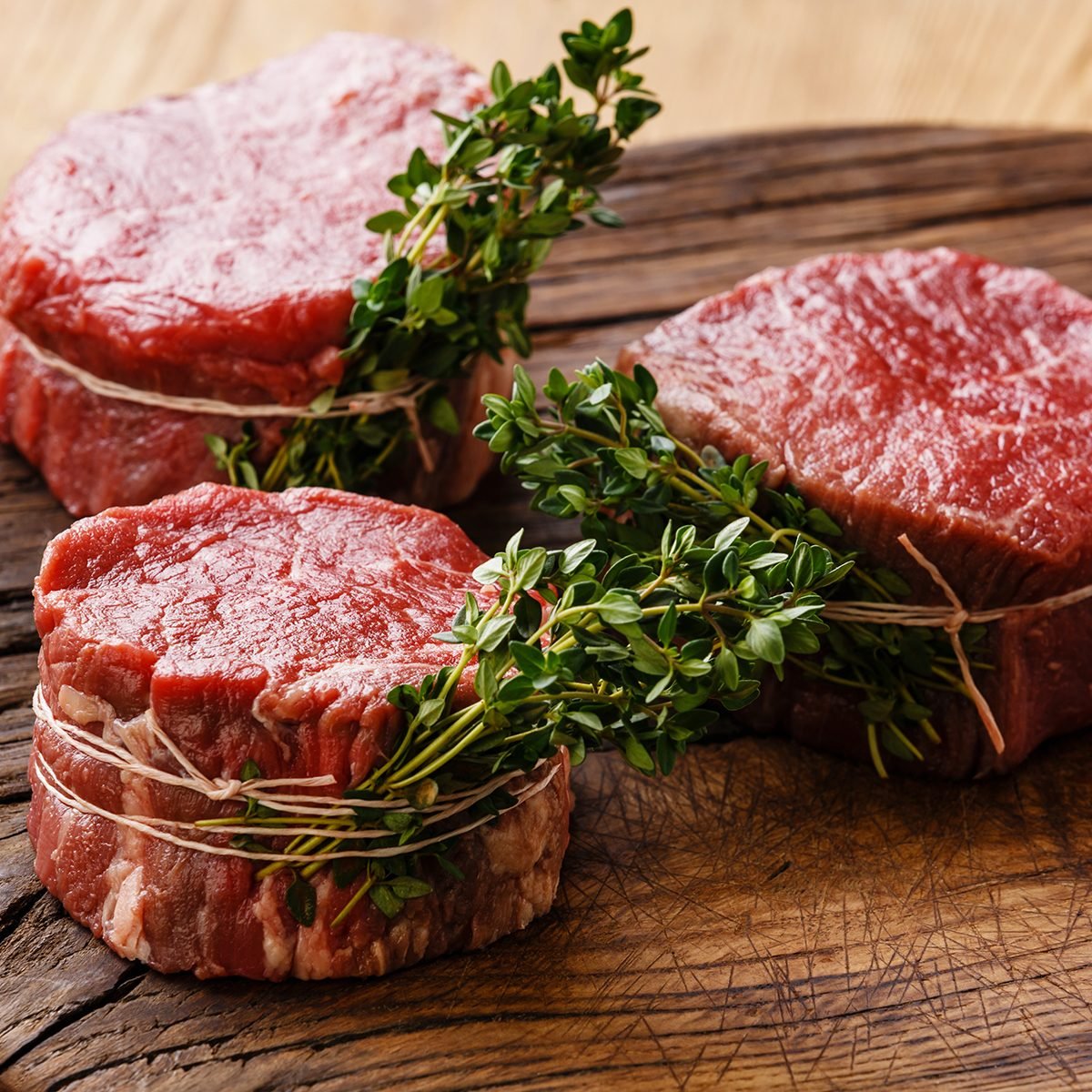

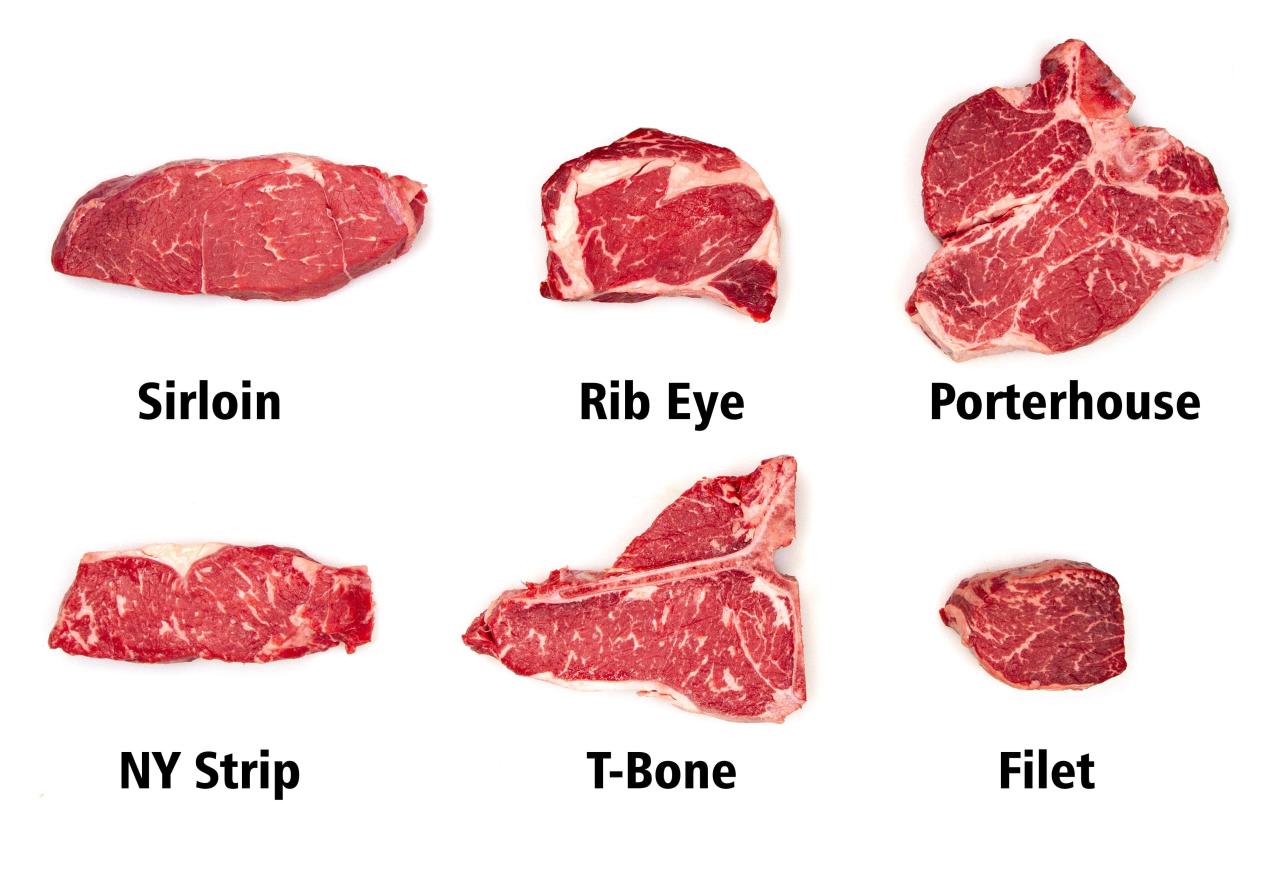
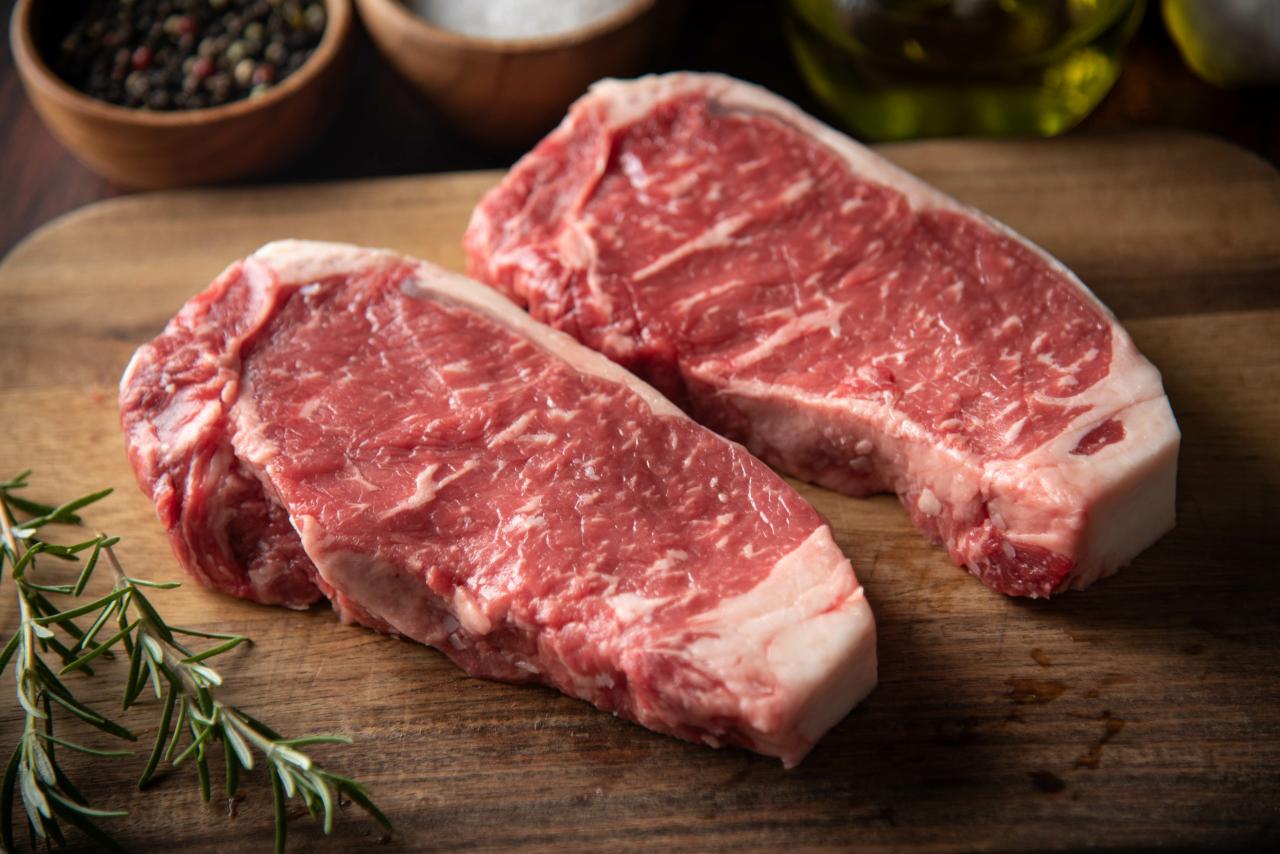
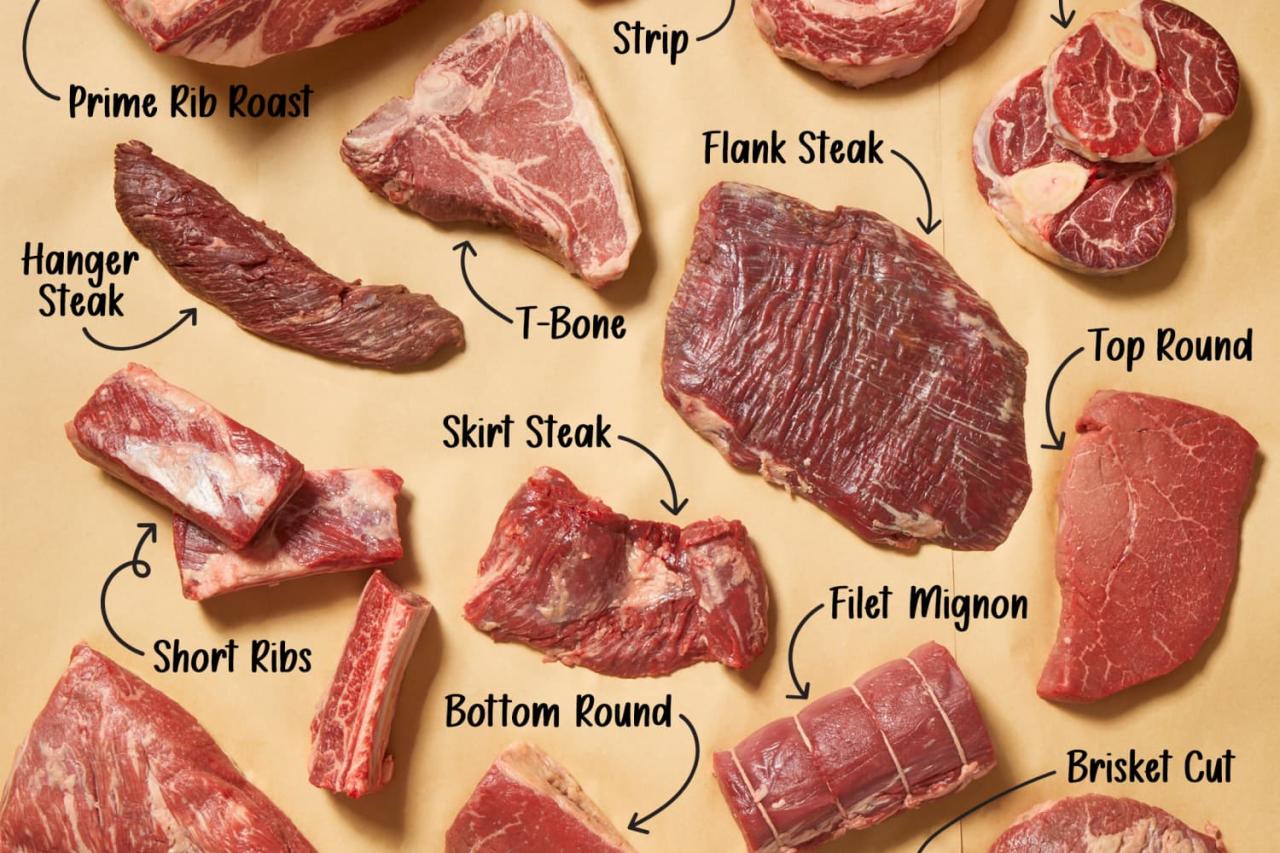
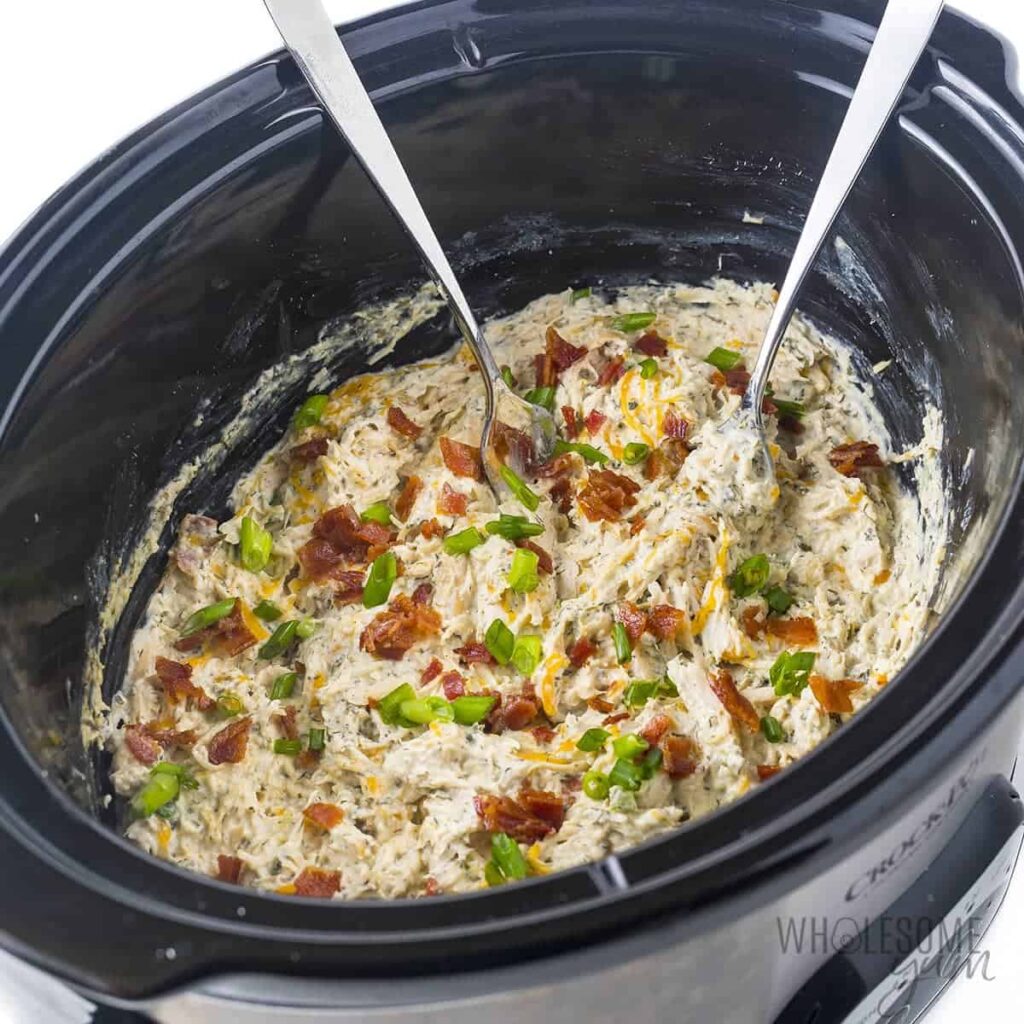

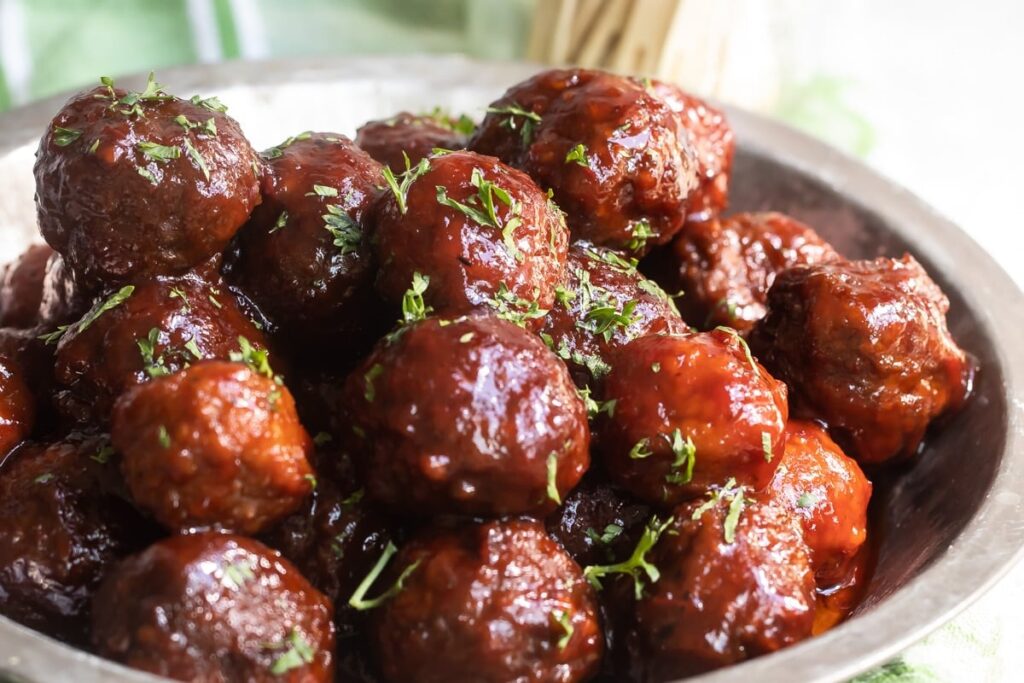
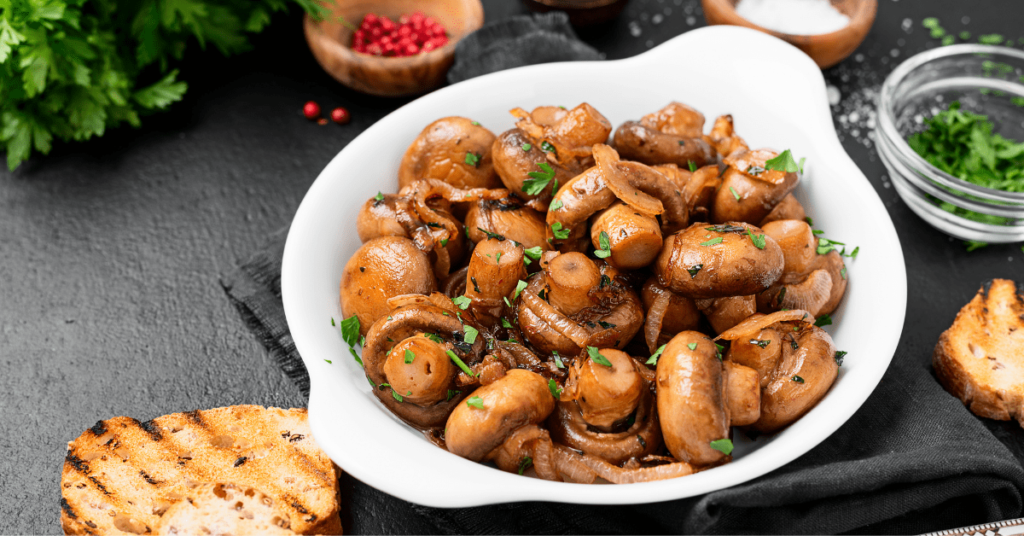
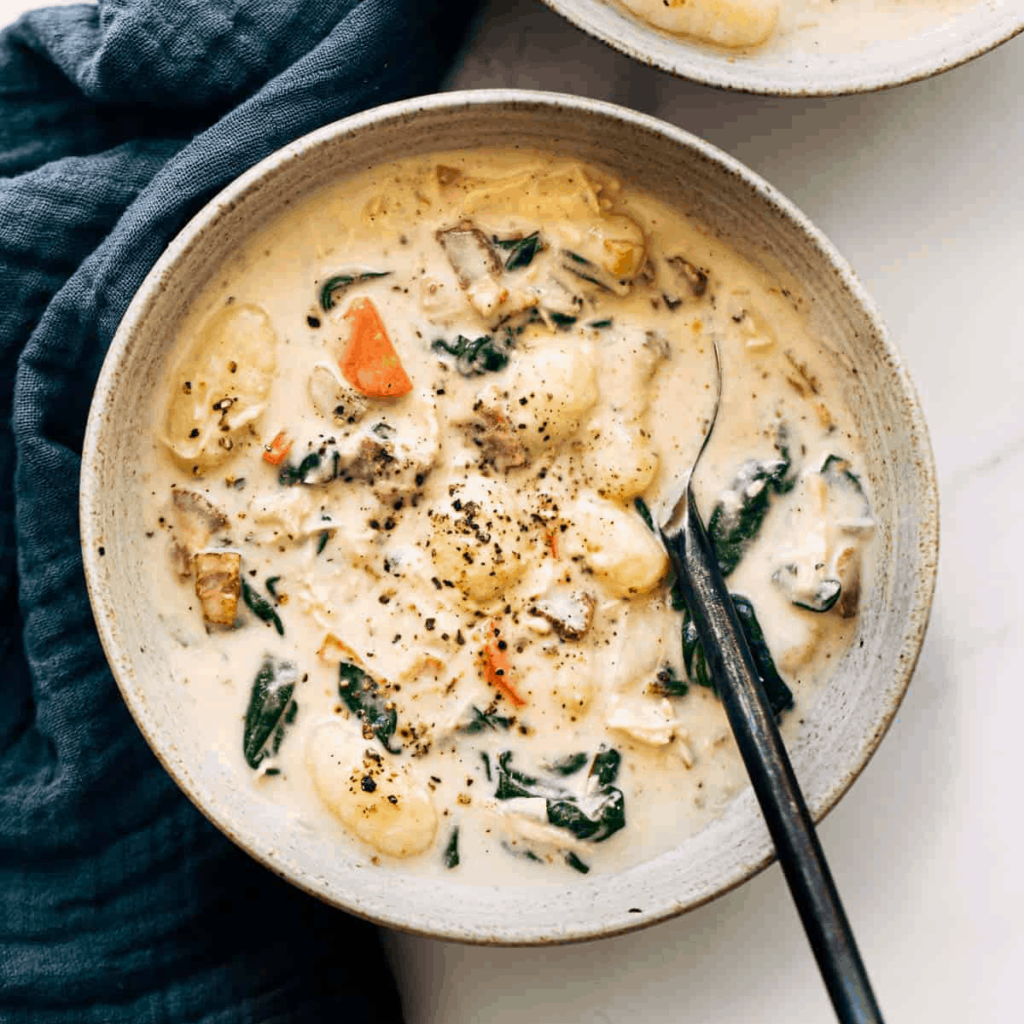
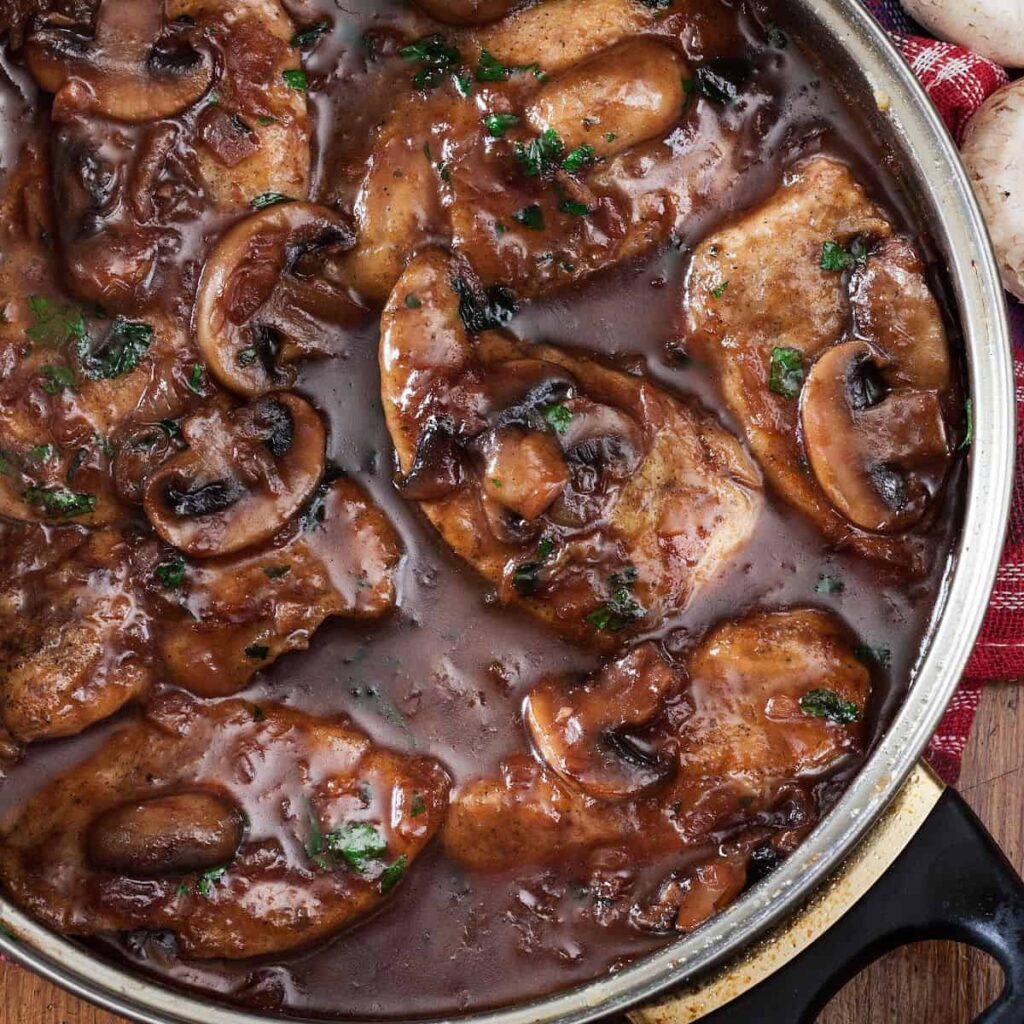

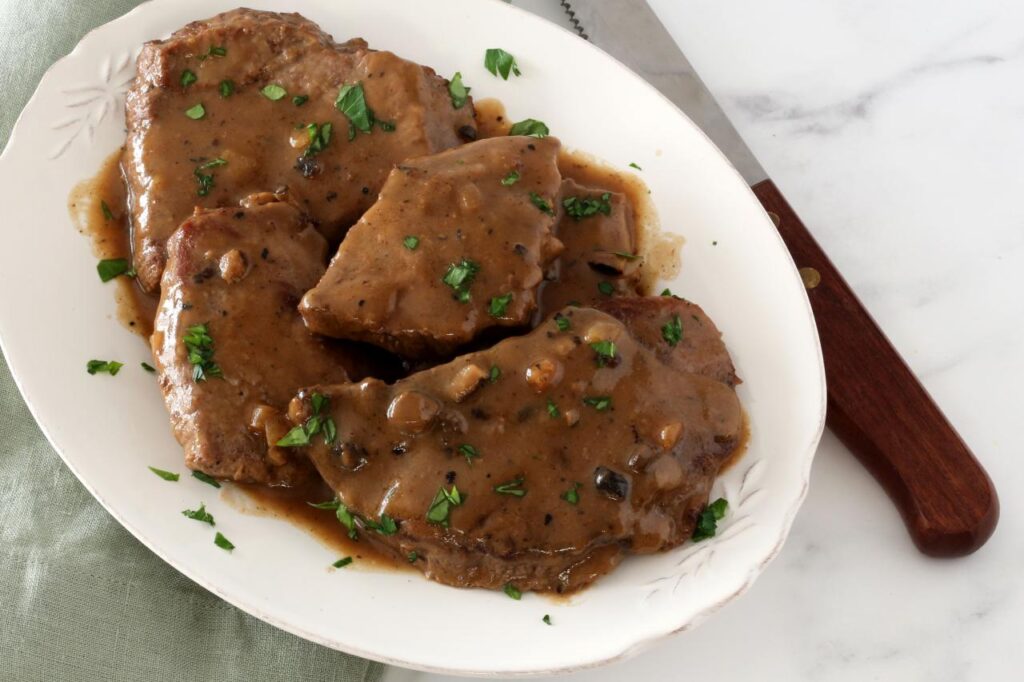
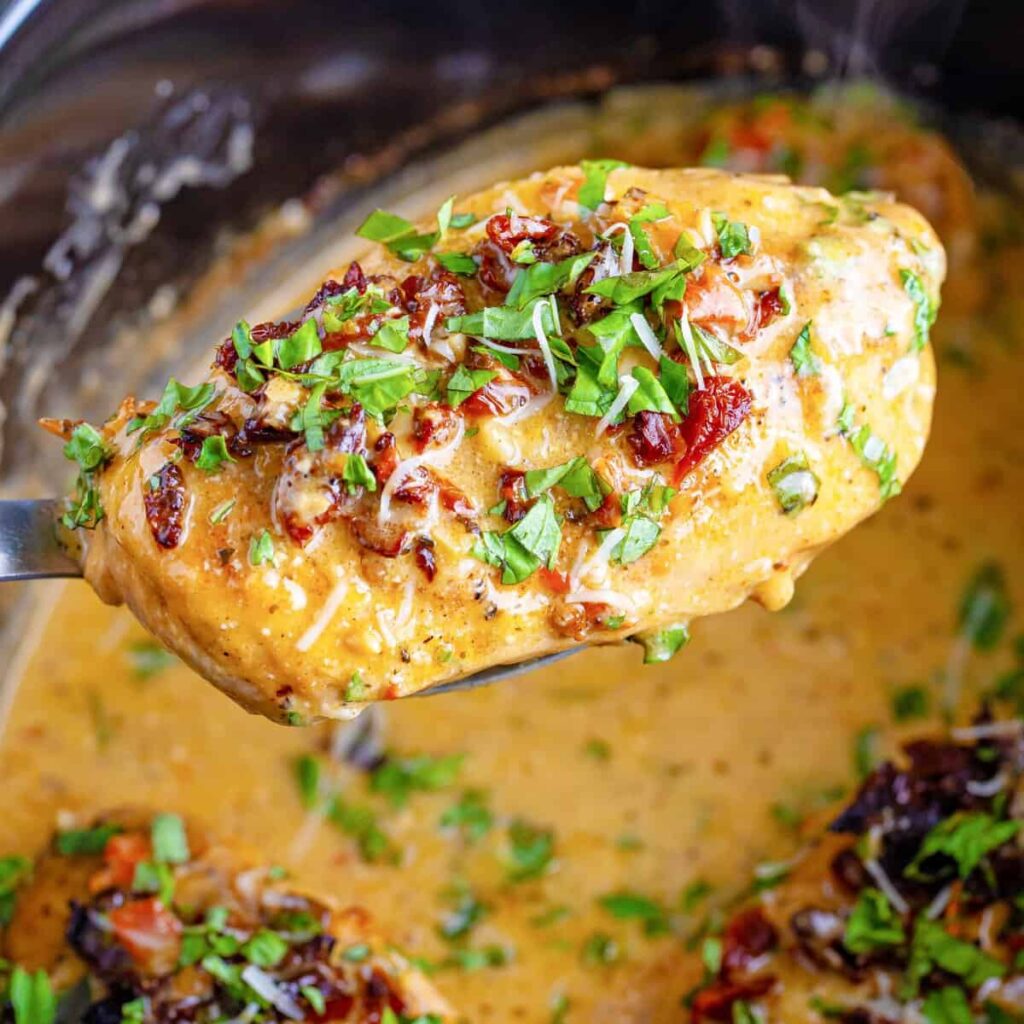

2 thoughts on “Types of Steak: A Comprehensive Guide to Cuts, Cooking, and Flavor”